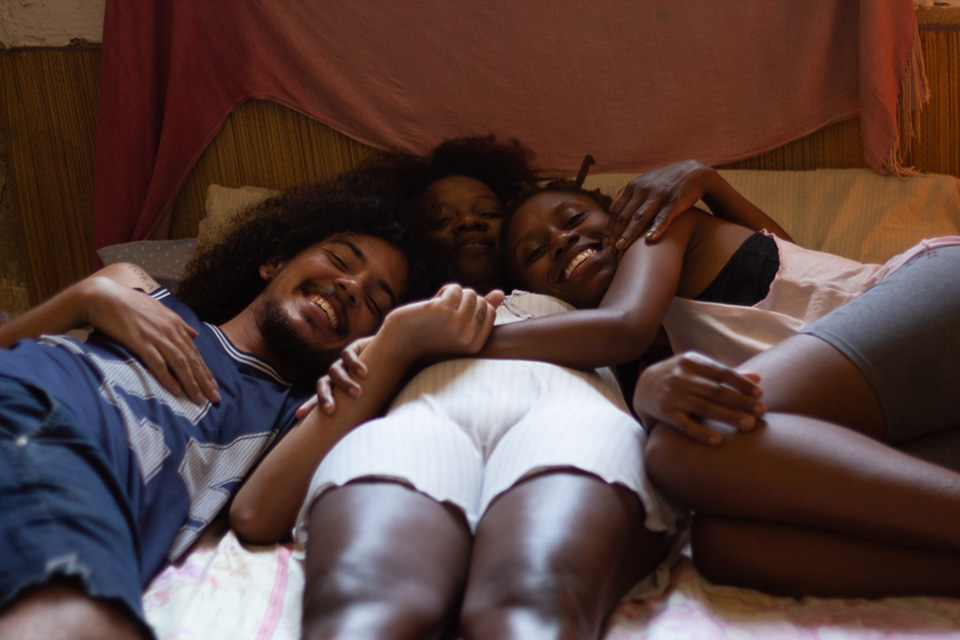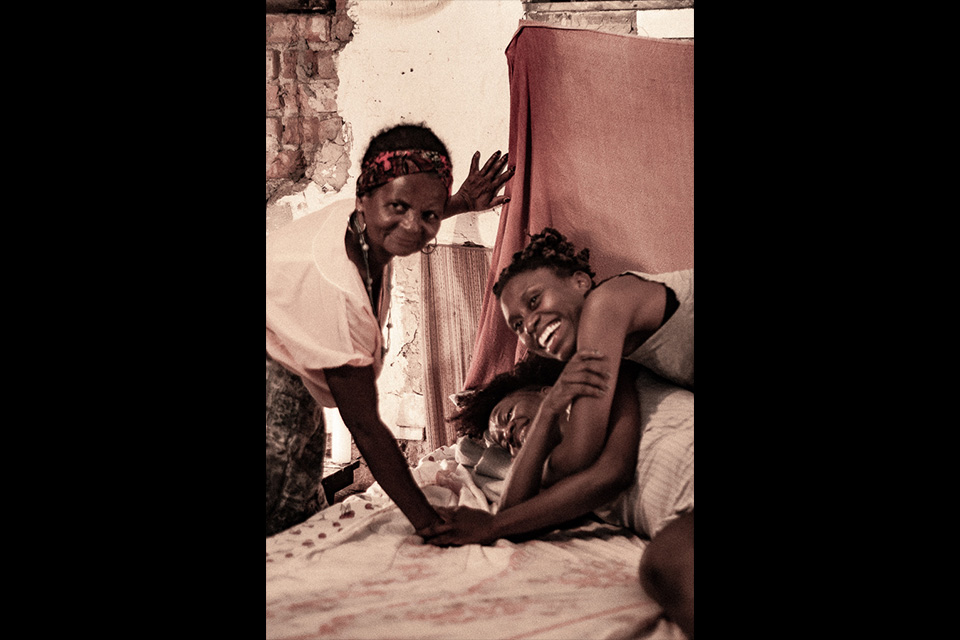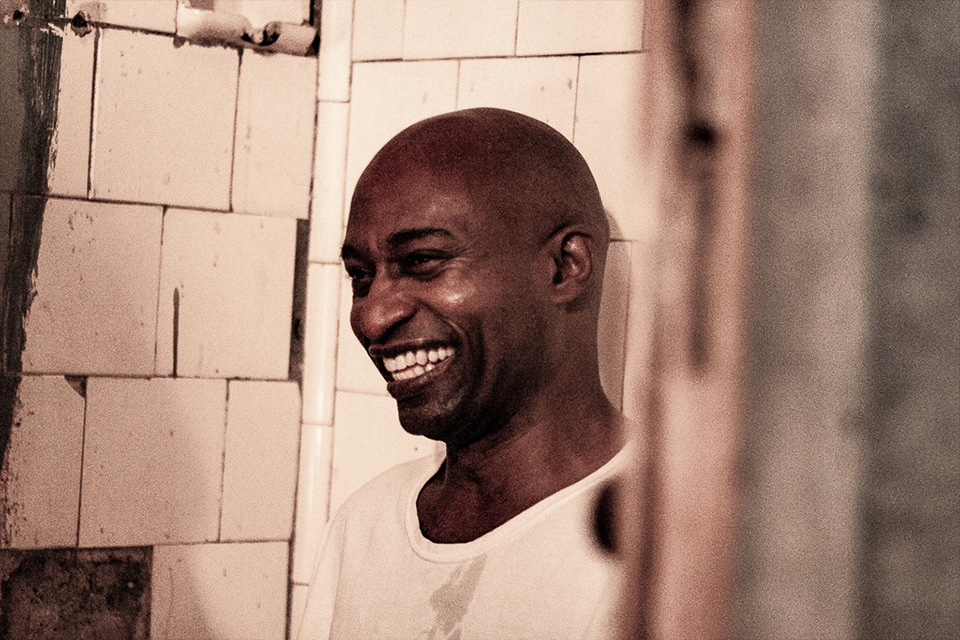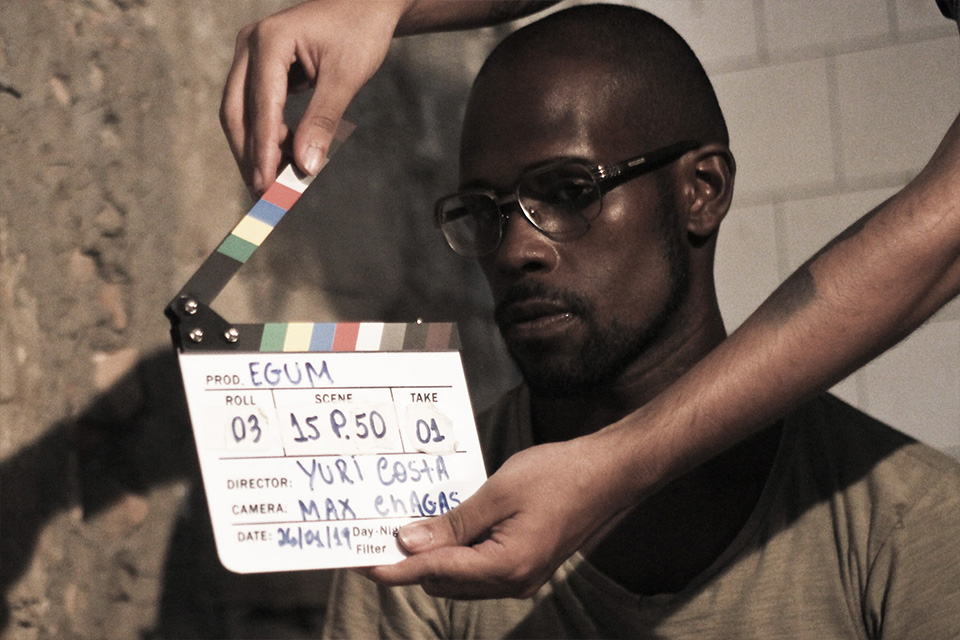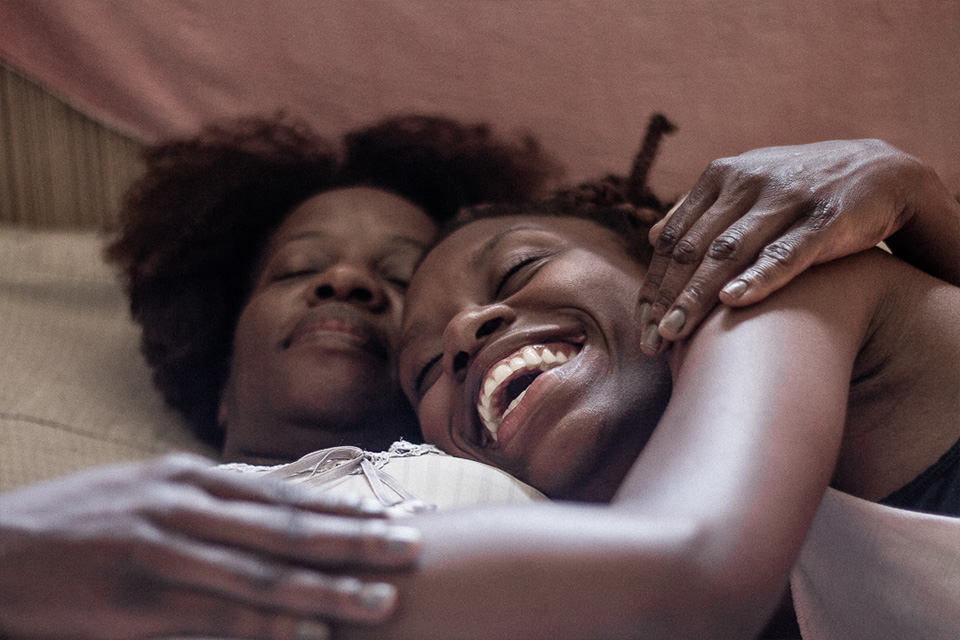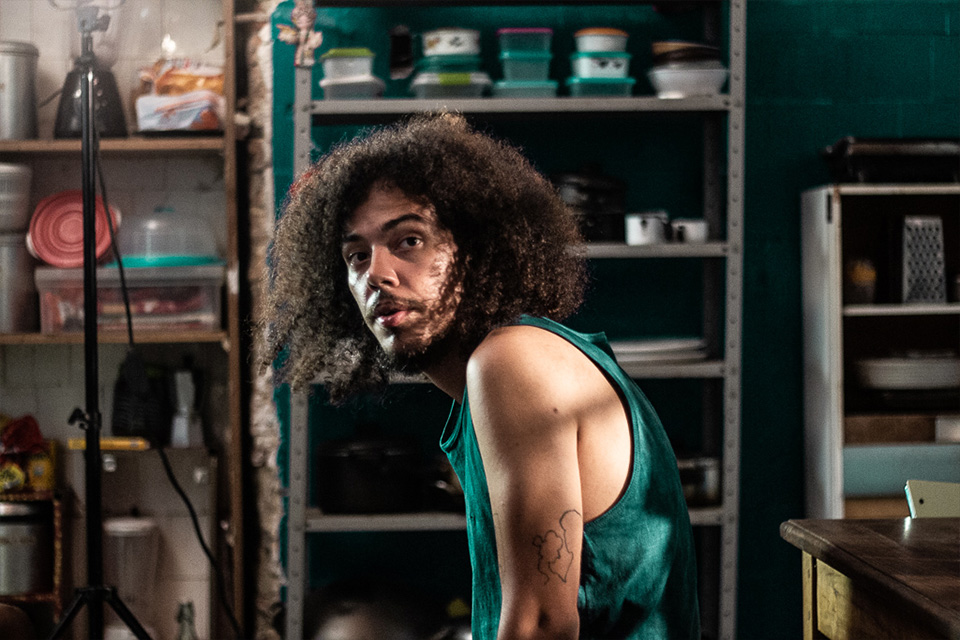SHORT FILM
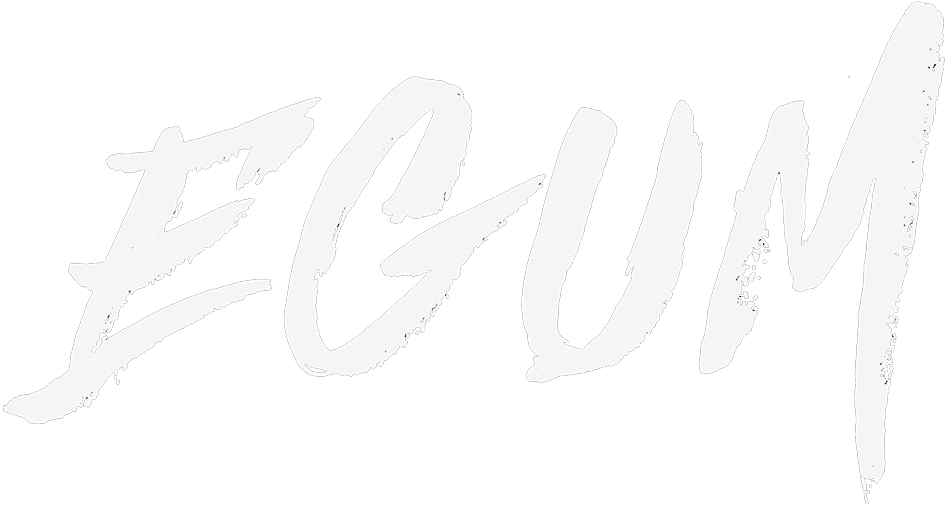
By Max Chagas
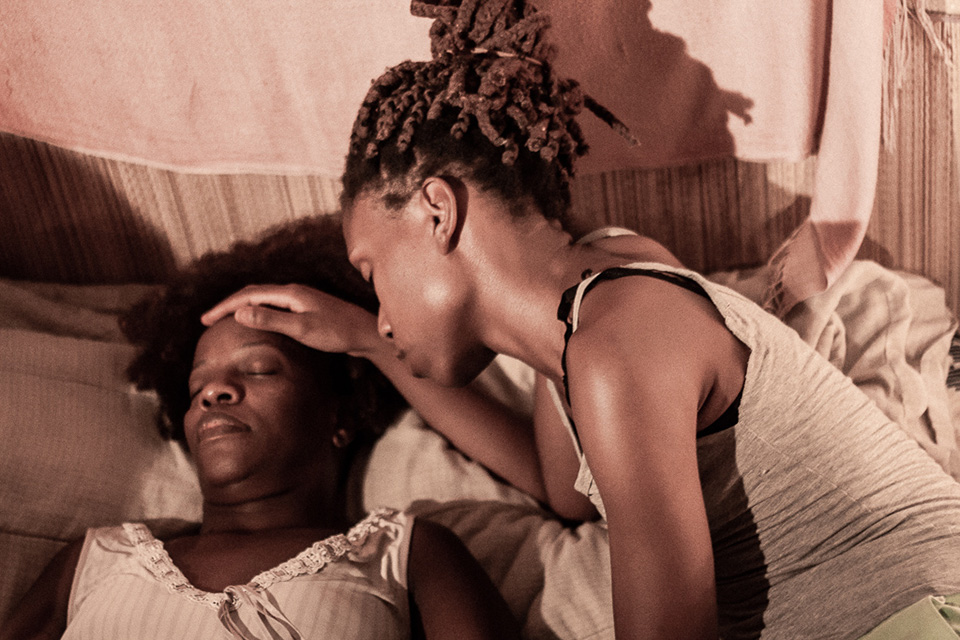
“Egum” is a black horror film that seeks to understand why the cheapest meat on the market is black meat and why black people — as well as our ancestors — are not at peace.
“Egum” is a black horror film that seeks to understand why the cheapest meat on the market is black meat and why black people — as well as our ancestors — are not at peace.
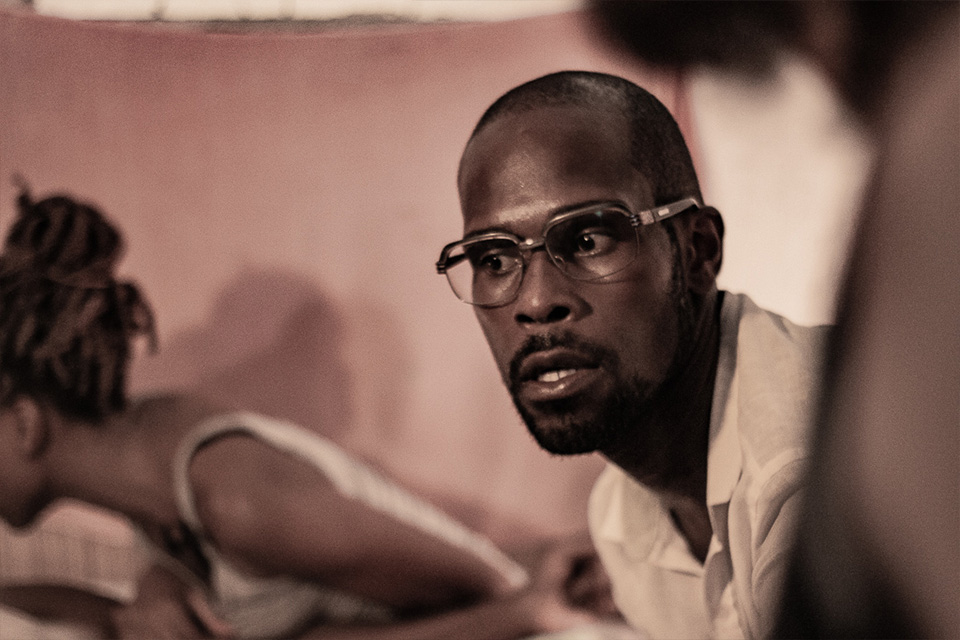
After years away due to the violent death of his brother, a renowned black journalist returns to his family’s home in the favela to care for his mother, who is suffering from a serious and unknown illness. One night, the journalist is visited by two strangers, who have unknown business with his father. This meeting, along with other events lead him to suspect that something supernatural has happened his mother and make him fear a new tragedy.
Director Yuri Costa’s proposal is to address the issue of the genocide of the black population and the colonial traumas in a narrative about black people. According to the Atlas da Violência, which measures violence and accidents in Brazil, for every 100 people murdered in Brazil, 71 are black, and every 23 minutes a young black man between 15 and 29 years old is murdered in Brazil. What links all these lives is the diaspora.
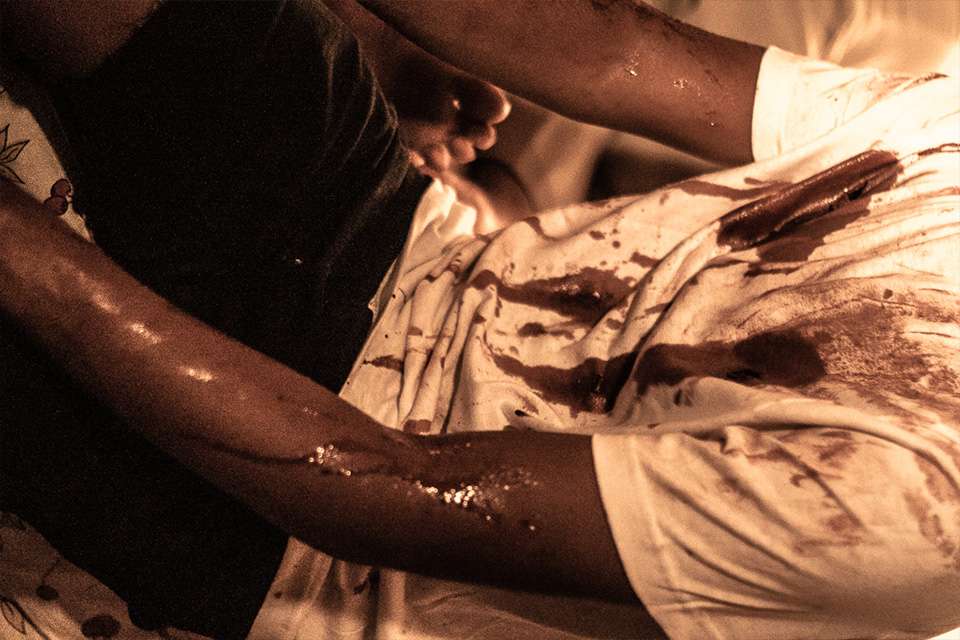
In the film, the characters are not identified by names, they are simply called Father, Mother, Sister, Grandmother and Son. The idea is to change the Brazilian racial phenomenon in a broad way with inflections. They are bodies brought from elsewhere, violated in other spaces on the planet.
The supernatural tone is imprinted on the idea of what an Egum is. In African-based religions, such as Candomblé, Vodu and other religious and spiritual systems in America and Africa, the Egum are disembodied spirits, people who were here and are no longer here. Each group has a different interpretation of how they manifest themselves in reality and relate to the people of the world. In the film, as well as in Candomblé in general, we treat him as someone who left, but who is still connected to the space where they lived. It is someone who left in an unexpected context, but who still had something to do and could not accomplish, some task that still needed to be performed. Often, they also end up manifesting suffering, not only because of the possible context of death, but also because of the attachment to who or what is still here.
The only character in the film with his own name is Jonas, the younger brother, who was killed and permeates the existence of the residents of that house. He’s Egum (I apologize for the spoiler). He is a young man who was shot in the street and this created a series of issues not only for the family as a whole, but also individually, as each one has a different reaction to this death. This supernatural factor binds their meeting in that context and sets the tone of terror.
BLACK PEOPLE
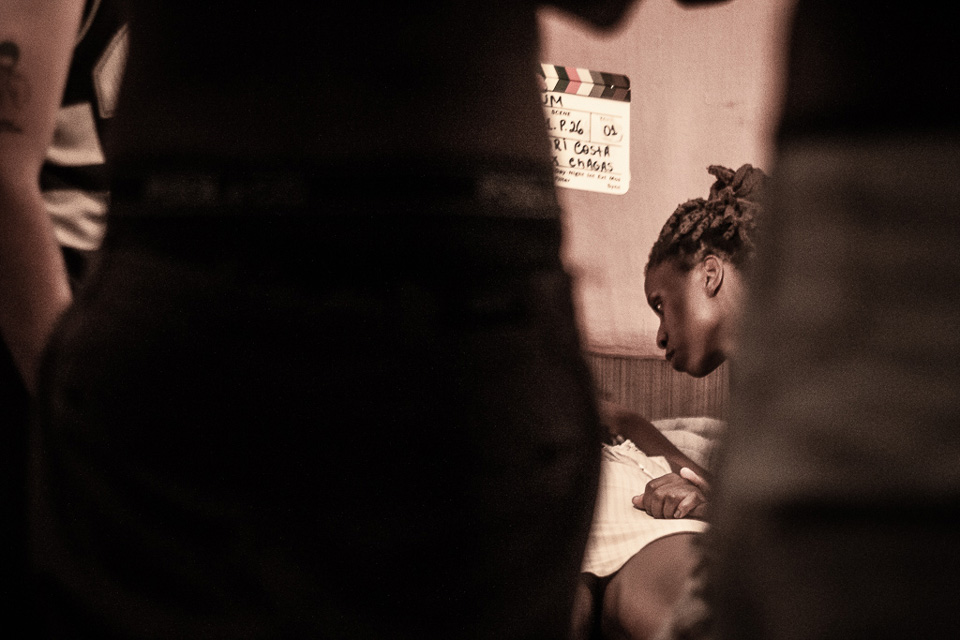
The short is very restless. It’s a heavy movie, in the sense of dealing with affection. It’s visceral, it messes with the stomach. Most of the crew is black people. Even though we are from different places in Rio de Janeiro and the country, we have similar stories. This was present on set and throughout pre-production when we discussed how we would deal with these issues.
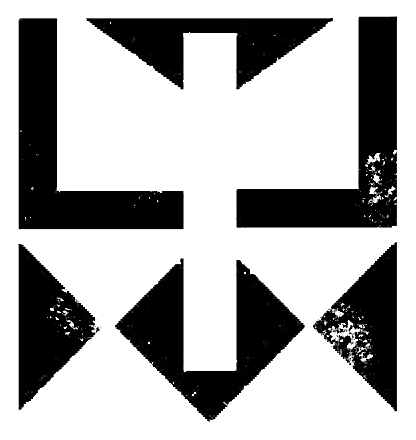
I met most of the team in college, but we had different schedules, majors and courses. Yuri and I are from Baixada Fluminense and we started college in the same semester. We always had some common interests. Our journey of discovering work possibilities in the communication market started from similar places. “Eleguá”, the first short film directed by him and photographed by me, was filmed in my house, also with a mostly black crew. Then he wanted to take this dynamic to “Egum”.

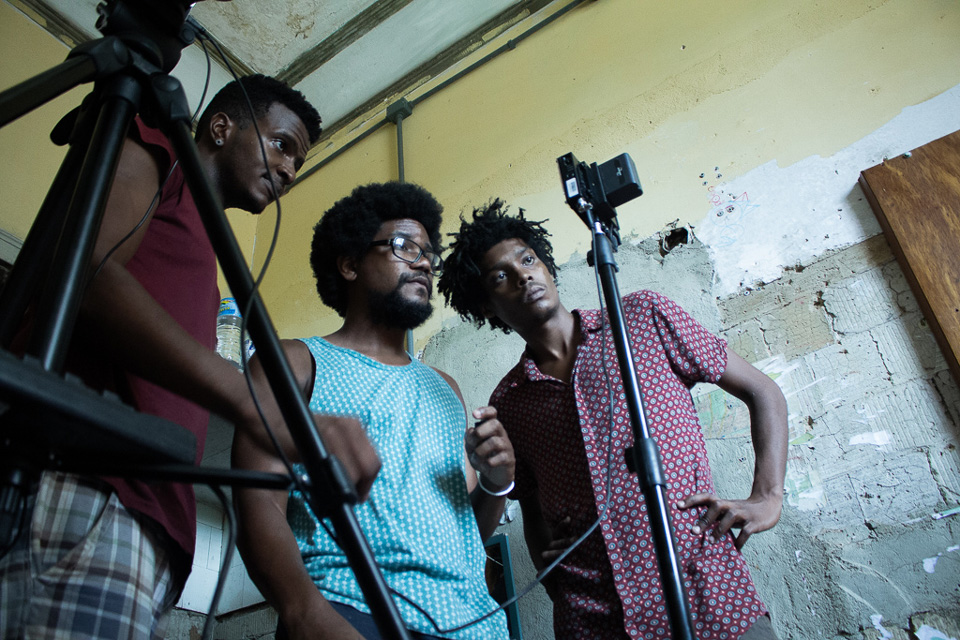
In my college references, there aren’t many black people who work in the cinematography department. It is not something diverse and democratic, as the equipment is expensive. Even in public universities, there are very few black people and even fewer in communication courses. Acquiring experience and networking on projects is very difficult. I couldn’t find professionals in my circle and had to look outside. We were able to have the participation of Hugo Lima, Arthur Pereira and Larissa Rios, the camera assistants who were fundamental in this search.
Hugo is a sinister bro. He has a project to manufacture camera accessories and items from 3D printers. It is also a great gaffer who knows how to be a grip. In this search for young black people with personal experiences, Yuri also introduced Arthur, who is a Geography student and has a lot of experience in photography, adding to the handling of the equipment, and Larissa, who is a journalist and supported with the set up of the lights. We also had Natasha Iane, who is a psychologist, and has projects with representations of black bodies in photography, making the still and making of the film. It was a synergistic thing, with everyone bonding together.
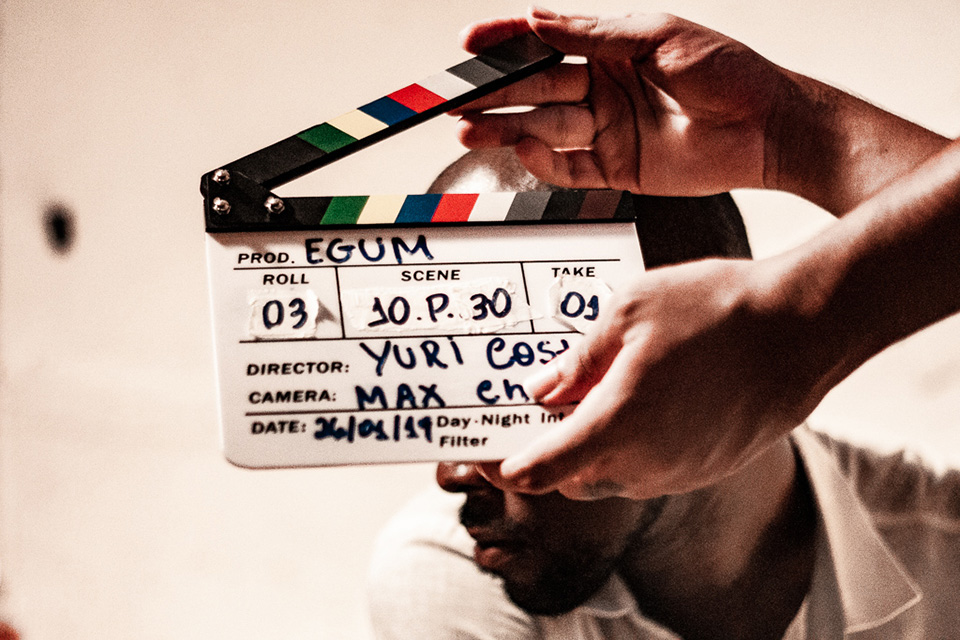
In the team, there were people from Umbanda, Candomblé and Spiritism, so it was not easy to talk about death and the disembodied spirit. We work with heavy things. There were people who cried. The image of a black mother crying over the death of a child is heavy. It’s hard to ask a black actor to play an abusive drunk father, it’s affectively complex. A black kid in a public school shirt, bloody nose and two bullet holes is heavy. These are things that affected the team members, black people who have been through or seen this type of violence. The idea was to create an atmosphere of mourning and death. Actress Valéria Monã was like a mother to us, a lovely person who tried to pout everyone at ease. Post-production also involved all the energy cleaning and detox process, as you couldn’t finish a heavy scene and go out for a beer with giggles thinking about festivals.
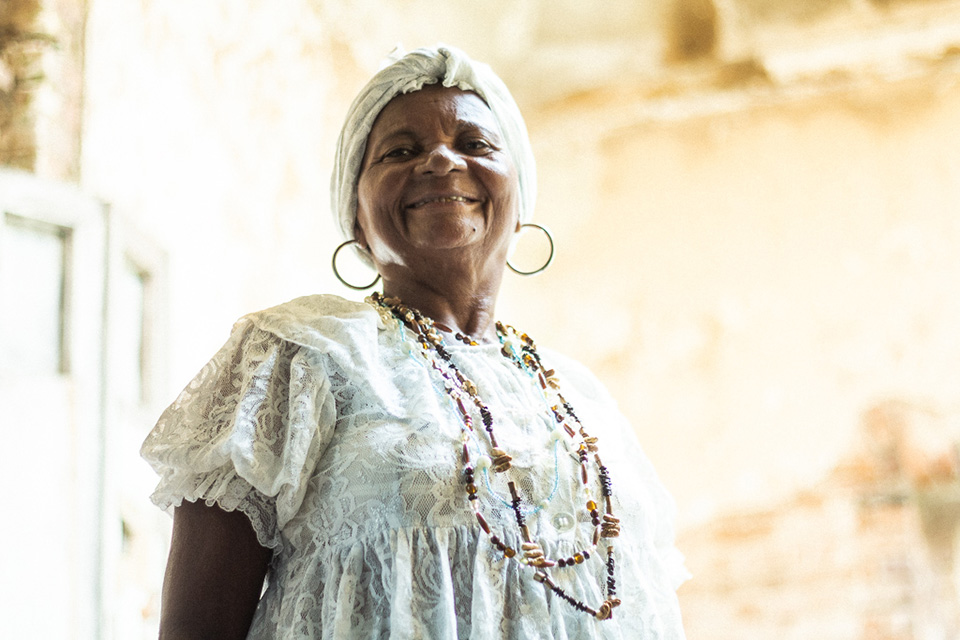
TECHNICAL CHALLENGES

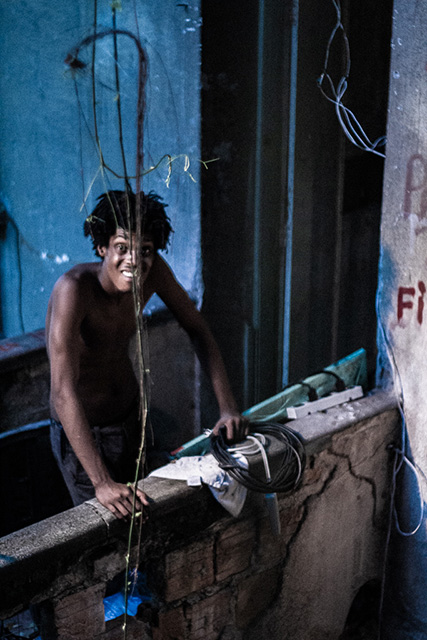
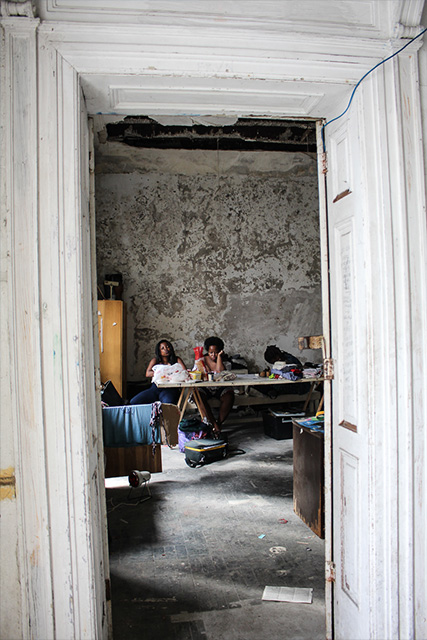
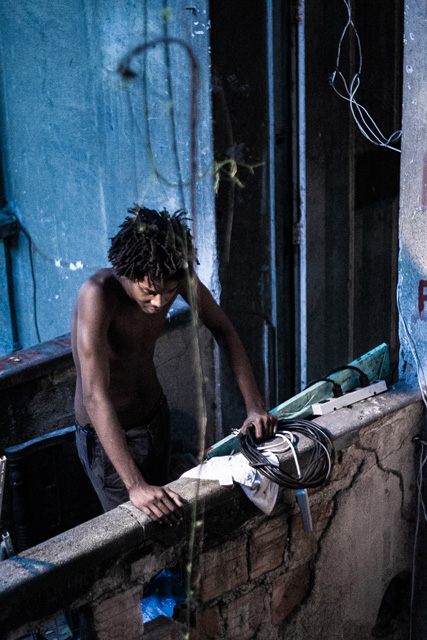
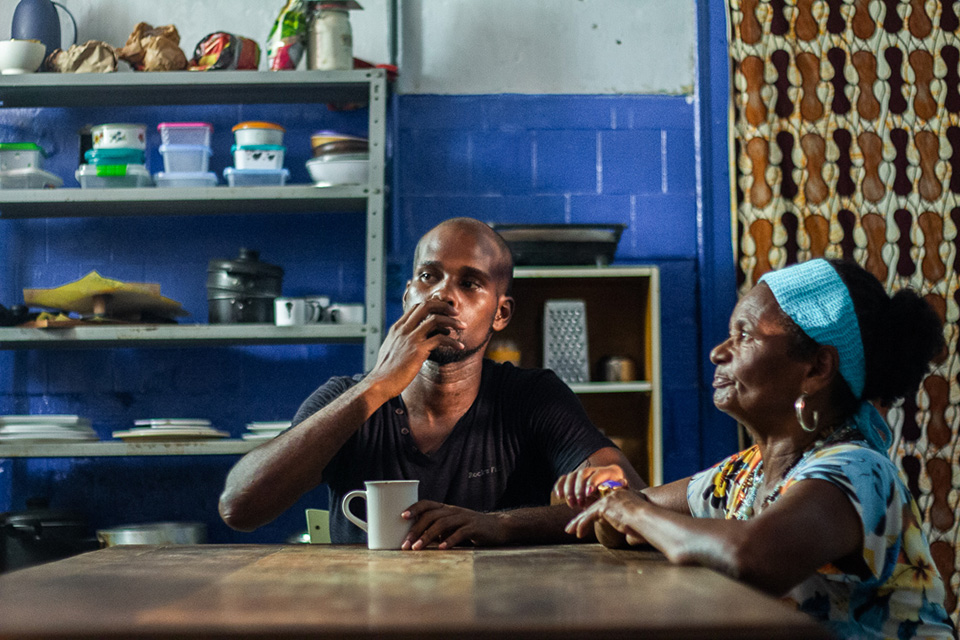
We worked with 8 lights in total. Yuri already had two soft-boxes in his production company, the rest were fresnel lights, two 1KW, two 650Wand two 300W. All the scenes in the movie are indoors and the house has lots of windows, so we were careful that the lighting made sense over the course of a day. As the kitchen had a window and a door, we always worked on the same axis and created an overall light to define the day with these larger fresnels outside. Inside, we put lights shining on the walls and made it stand out. The soft-boxes we used for the characters. In the breakdown, we start with the more open wide shots and then move on to the close ups. Despite the limitations, the electrical logistics were smooth thanks to the team’s efforts.
We had a 5-lens kit, but I used mostly an Olympus 16mm f/3.5, a ZEISS 35mm f/2.8 and a ZEISS 50mm f/2.8 for close ups and inserts. They created an impression of skin plasticity. As the light was very direct, pores appear. This created an aspect of excess, which made it possible to feel the characters’ breath and sweat. The idea wasn’t to create something like a “soft” dreamy look (we even talked about using a Pro Mist filter), but to make something surreal as real as possible, with wall textures, tile reflections and fine lines on well defined faces.
As the house geography of the house is never really set up, suggested only by a corridor, we were able to invent window lights that didn’t necessarily exist in the location. That way we could add sources of light here and there.
LIGHTS, CANDLES AND CONTRASTS
The arrival of a couple of white characters was filmed on a staircase at the house, on the side of the location, where there is a stone wall. It’s in the back laundry area, next to the washing machine and the kitchen, but we managed to convey the impression that it’s the main door to the room. In the corner, we had a 1K Fresnel to simulate the light from a streetlamp, as if it were an alley or some kind of street. The characters live in a house with few items, without much furniture, television, objects and other appliances.
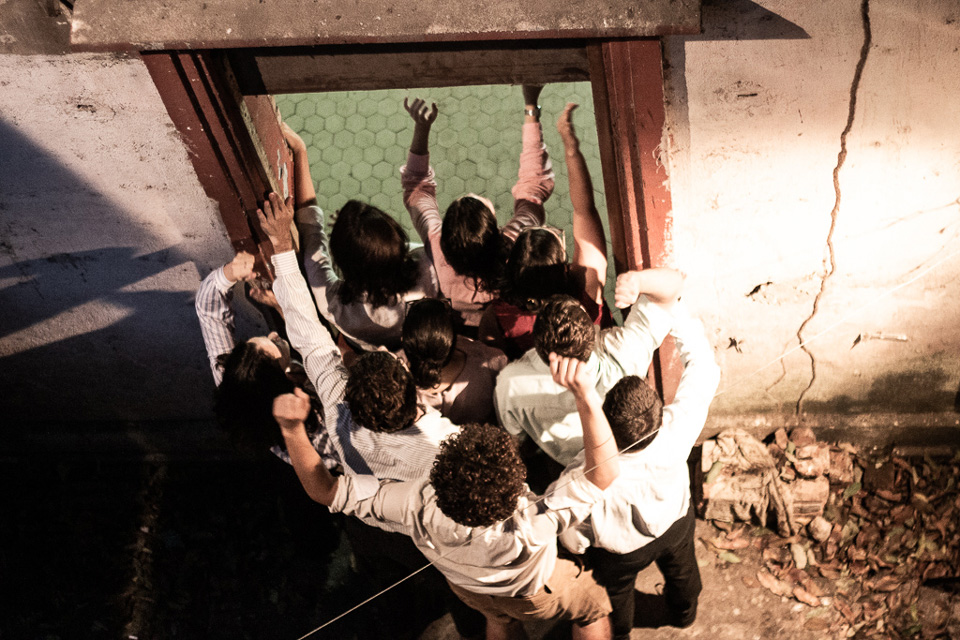
ALIVE CAMERA
The handheld camera moments reinforce the human immersion of the viewer, who is transported into the scene. Yuri doesn’t like to split the dialogues between shot and reverse shot. Keeping it moving made more sense to him, so we’d do a whip, a pan and go. He also has moments of purposeful shivering, maddeningly, as in the final invasion and the outbreak. The challenge was to do something eruptive and shaky without losing focus. The idea was the opposite of disguising the trembling, it wasn’t to float.
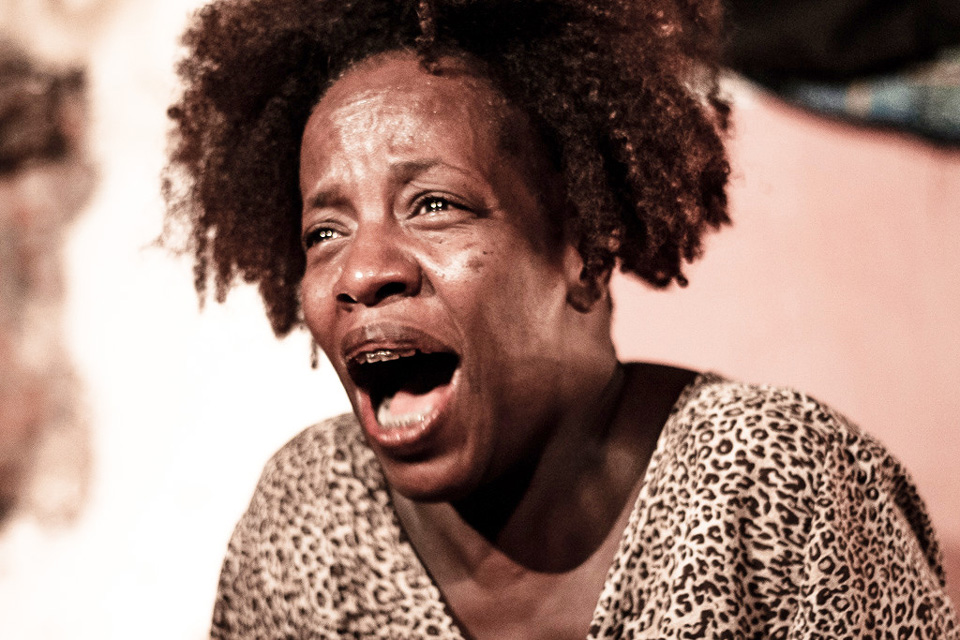
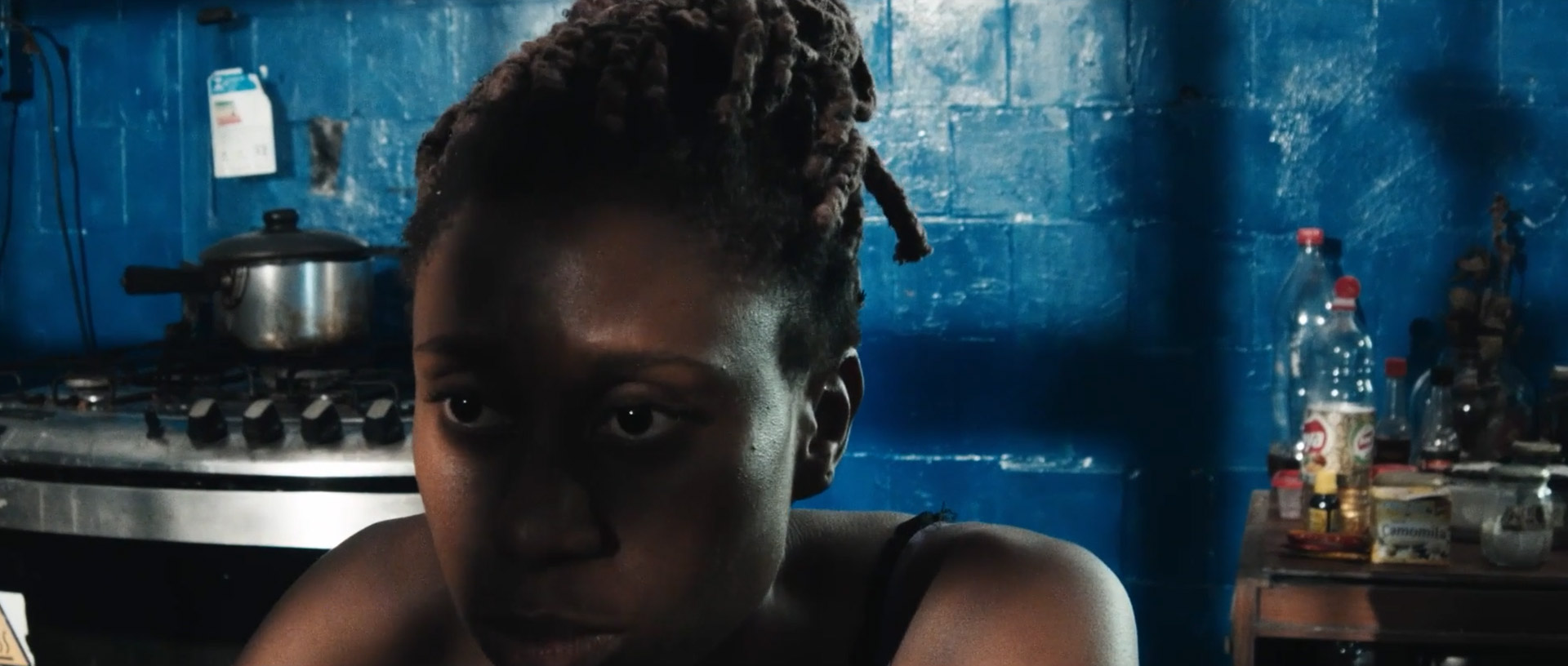
In the dialogue between the brothers in the kitchen, the camera is alive. It starts out static and slowly moves towards the table as if it has awakened interest in the conversation. Then it gets close to the actors until it gets to the face of actress Bruna Rodrigues. The light coming from the window was a Fresnel and the shadows from the bars form a black frame around her bright eyes. It was interesting, especially because at that moment we realize that that character is the one who does everything for the family. She snaps and makes her brother realize that he has left his relatives to devote himself to his professional life. He realizes that he went through a kind of whitening process to become a journalist and he no longer understands anything that goes on in that house.
CINEMATOGRAPHIC AND BIBLIOGRAPHIC REFERENCES
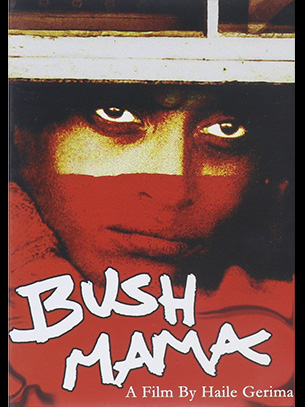
We used some cinematic references, but they weren’t very technical specifically. Films such as “Vargtimmen” (1968), by Ingmar Bergman, and “Bush Mama” (1975), by Haile Gerima, brought inspirations for lighting, compositions and close ups shot, as well as handheld camera movements that accompany the character. Dee Rees’ film “Pariah” (2011) also brought initial ideas about the “nervous” handheld camera we see throughout the film.
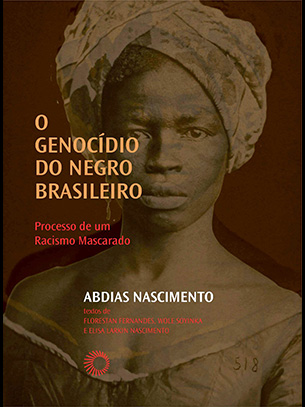
In addition, Yuri brought textual references for the elaboration of the script that served as a compass to understand the dynamics of the scenes. In “The Open Boat”, Édouard Glissant talks about the experience of the deportation of Africans to the Americas, a phenomenon that marks the abysses highlighted in the film. In “The Genocide of the Brazilian Negro”, by Abdias Nascimento, and “Archetypes and Stereotypes”, by João Carlos Rodrigues, we had an overview of the Brazilian racial phenomenon, a common thread in the history of “Egum”, but also the representations of stereotypes commonly associated with the black bodies and presents in the film.

And finally, Frantz Fanon’s psychoanalytic interpretation of the black issue, “Black Skin, White Masks”, was also required reading for the film, which begins with a direct quote from Fanon.
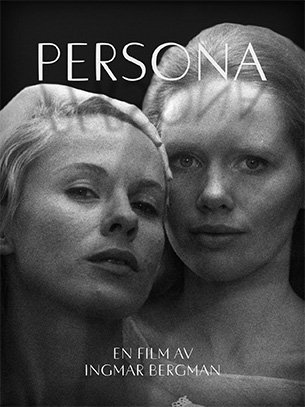
We had aesthetic and iconographic references, including paintings, for some shot dynamics. One shot specifically references one from Ingmar Bergman’s “Persona” (1966). But in the end, it was more important to understand what we were feeling ourselves.
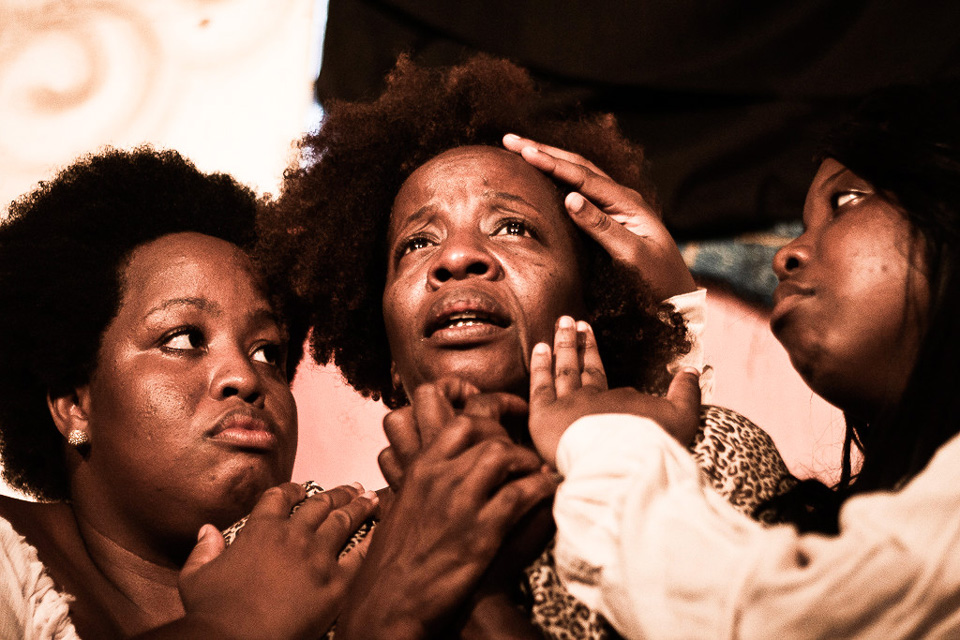
In filming “Egum”, the issues revolved much more around people than filming techniques. Dealing with people was the most important thing. It was much more about humane treatment.
STILL and MAKING OF
By Natasha Iane
The work for the stills was more focused on the scene, given the location conditions, production and the shooting set up that took place in other people’s homes, interfering a lot in the space moving logistics. During filming, I also sought to portray the activism, the finesse, the lightness and the complicity that drove the film set and the necessary and affectionate care that is needed to develop a plot as intense as Egum’s. The photos are a great contrast to the plot of the film, so you have access to the narrative of the team’s affections.
MINI BIO
Max Chagas worked as a director of photography in short films such as “Algum Romance Transitório” (2017) and “Eleguá” (2018), in addition to the series of documentaries for the LabJaca project, filmed in Favela do Jacarezinho in 2020, among other films. He has also directed music videos by black and peripheral artists such as Xaga, Vitin, Koji, João Okami, Lexa, Kymaih and Ghetto ZN. He also works with sound, color correction and editing.
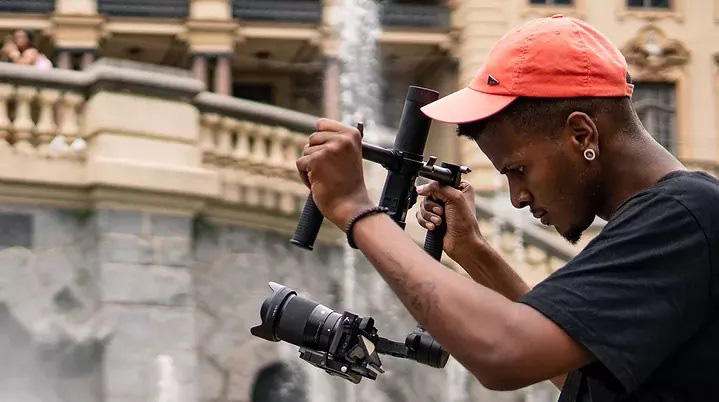
Photo: vitor garcia

